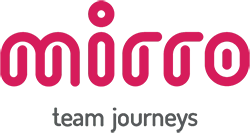SECTION
Thought Leaders Share Examples of Building Community in the Workplace

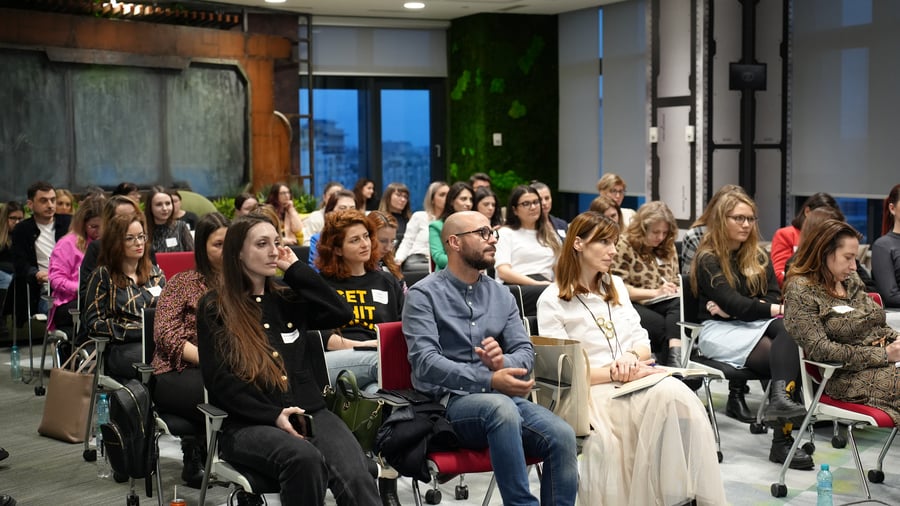
Listen to this article:
Building strong workplace communities requires a sense of belonging. Studies have demonstrated that individuals who feel a sense of belonging within an organization perform better. Moreover, companies that foster a strong sense of belonging have higher overall retention rates and see three times more revenue growth than competitors who do not.
Recognizing the increasing need for belonging at work, Mirro recently organized the “Engage, Empower, Evolve: Driving Peak Performance through Community Engagement” event. Our panelists, Monica Zdrancotă, HR Director at McDonald’s in Romania; Simona Berbec, Market HR Lead at Google; Laura Roșianu, People and Business Development Consultant at Exploratist; and Florentina Greger, Chief Talent Experience Officer at Zitec shared their knowledge on building strong communities in the workplace.
What does it mean to feel a sense of belonging to the organization?
We started the event by delving into the concept of belonging. Building strong communities requires every voice within the organization to be heard and valued. Encouraging diverse perspectives and ensuring everyone feels cherished fosters a deeper sense of belonging.
Moreover, authenticity lies at the core of belonging. When individuals feel they can bring their true selves to work without fear of judgment, it creates a sense of psychological safety and acceptance. Embracing authenticity fosters a culture where diversity is celebrated, creativity thrives, and innovation flourishes, ultimately contributing to a more inclusive work environment.
Belonging is closely intertwined with the quality of relationships within the workplace. Encouraging open communication, fostering honest and authentic connections, and nurturing a supportive environment all contribute to fostering a sense of belonging.

What are the main pillars of an environment that encourages belonging?
Now that we've clarified the concept of belonging, let's see how we build it. Our panelists outlined the following key pillars that organizations committed to nurturing belonging should prioritize:
- Clarity is key. Establishing a clear company story and goals inspires everyone to contribute to the business' growth.
- Uphold standards and policies. Global standards, transparent policies, and brand responsibility are crucial for creating a safe and respectful environment where everyone feels valued and respected.
- Foster inclusivity. Reach out to all voices within the organization, ensuring that diverse perspectives are heard and valued. Educate managers to gather diverse perspectives and help them set diversity, equity, and inclusion objectives.
- Support specific communities. Create communities with dedicated agendas and budgets, fostering discussions, sharing experiences, and educating others.
- Embrace transparency. Discuss failures and results openly, provide platforms for communication with leadership, and empower employees to voice their opinions.
- Collaborate for success. Recognize that fostering belonging is a continuous team effort, requiring collaboration across departments, and is not solely HR's responsibility.
By embracing these pillars, organizations can cultivate a culture where everyone feels valued, heard, and empowered to contribute their best.
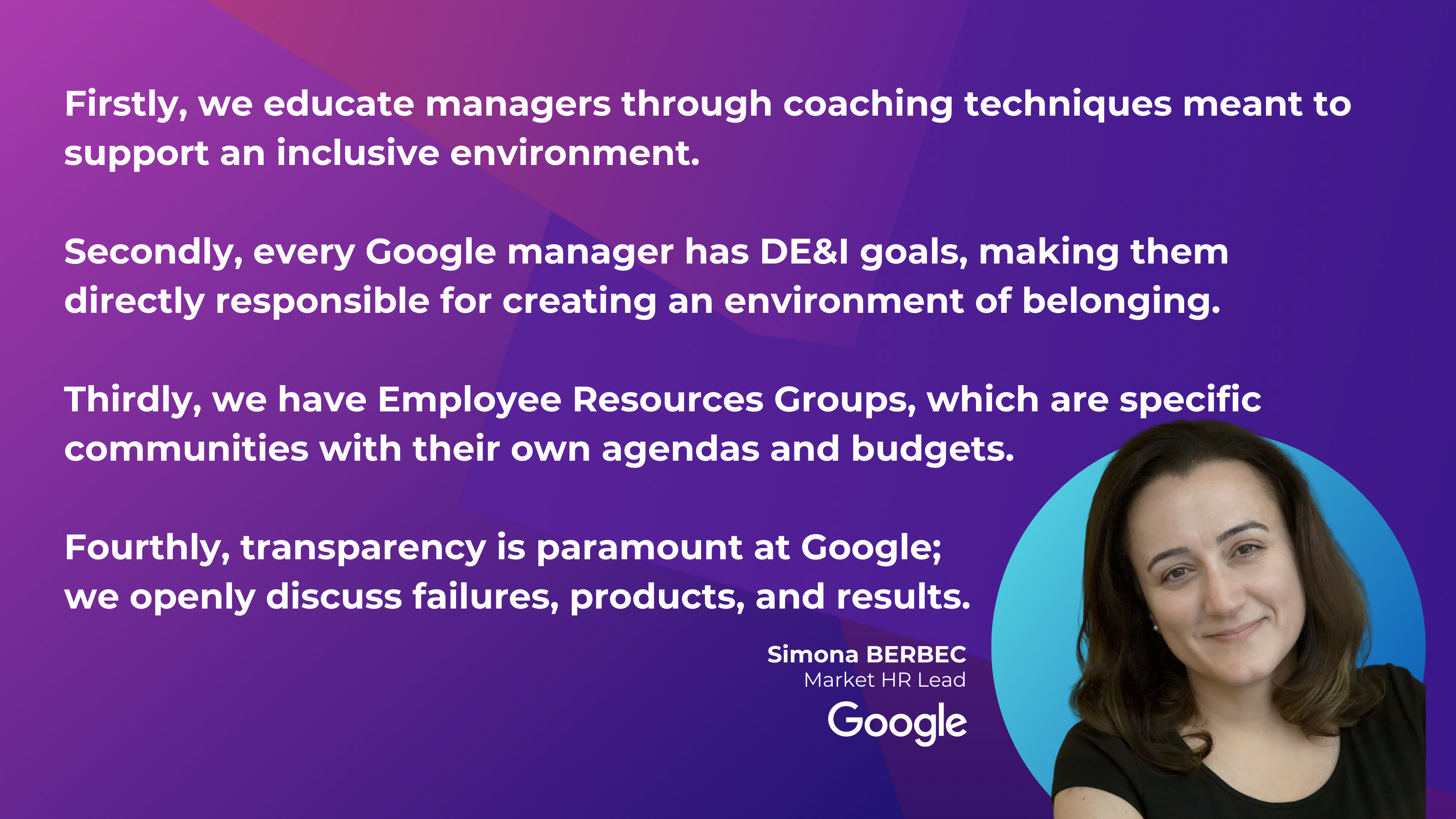
What concrete actions can leaders take to encourage belonging?
Enhancing belonging in the workplace requires concrete actions and measurable outcomes. Fostering belonging entails ongoing dialogue, qualitative analysis, and tailoring actions to meet individuals' needs. When resources are tight, focus on initiatives that resonate with employees' preferences.
Our speakers emphasized the importance of conducting annual surveys to gauge feelings of exclusion and allow employees to voice their concerns. These surveys should prioritize qualitative feedback, which can be translated into actionable plans shared company-wide.
Additionally, the experts highlighted the importance of promoting diversity through practices such as team interviews and refocusing performance evaluations on individual strengths.
Lastly, they underscored the power of interest-based mini-communities to encourage participation and measure their impact on retention rates, highlighting the importance of providing dedicated resources to support these initiatives.
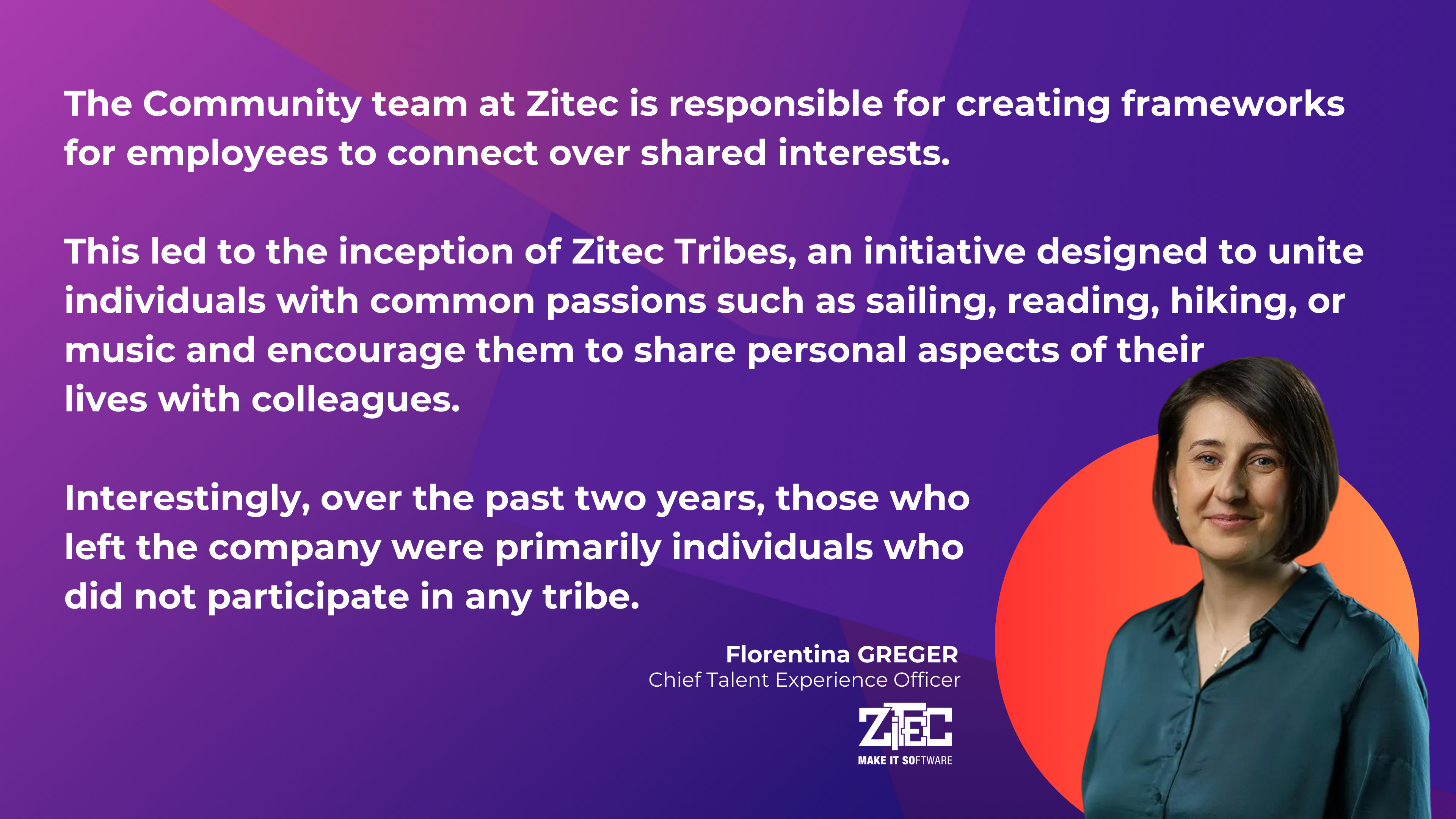
How can leaders link business indicators to the impact of these actions?
We can all agree that fostering a sense of community in the workplace is vital, but how do we tie it to business metrics to ensure tangible benefits?
Translate actions into benefits
Monica emphasized the importance of translating actions into tangible benefits for internal clients, addressing issues such as communication inefficiencies and managerial workload. She explained why Mirro solves these challenges by facilitating job-related conversations, simplifying digital processes, and enhancing team knowledge.
Leadership and culture
Simona emphasizes the role of leadership in embedding belonging into the company's mission. When leaders prioritize belonging, budget allocation for related initiatives follows suit.
Data-driven decision-making
Florentina stresses the significance of analyzing data to understand the financial impact of initiatives. Quantifying factors like turnover costs and the cost of unhappy employees makes budget allocation more convincing.
Using studies and benchmarks
Laura suggests effectively leveraging studies and benchmarks to support these initiatives, providing additional justification for budget allocation.
How can technology help create a community in the workplace?
Lastly, how could technology help us instill a sense of community in the workplace and encourage tangible and intangible elements? How can technology be catalytic and manageable through sheer numbers of platforms?
Firstly, HR tech facilitates a consistent experience across different locations, ensuring immediate access to information and enabling seamless discussions regardless of physical distance.
Secondly, technology serves as a catalyst for digitalization, addressing various HR challenges by facilitating communication, interpreting feedback, and offering AI-driven insights, all while navigating potential issues associated with an overload of tools.
Moreover, technology plays a crucial role in fostering connections, offering easy access to communication channels. While acknowledging that machines cannot replicate human relationships, automation of HR workflows can free up time for more meaningful interactions.
Lastly, technology streamlines decision-making processes by providing an overview of data analysis, simplifying complex information, and enhancing decision-making efficiency.
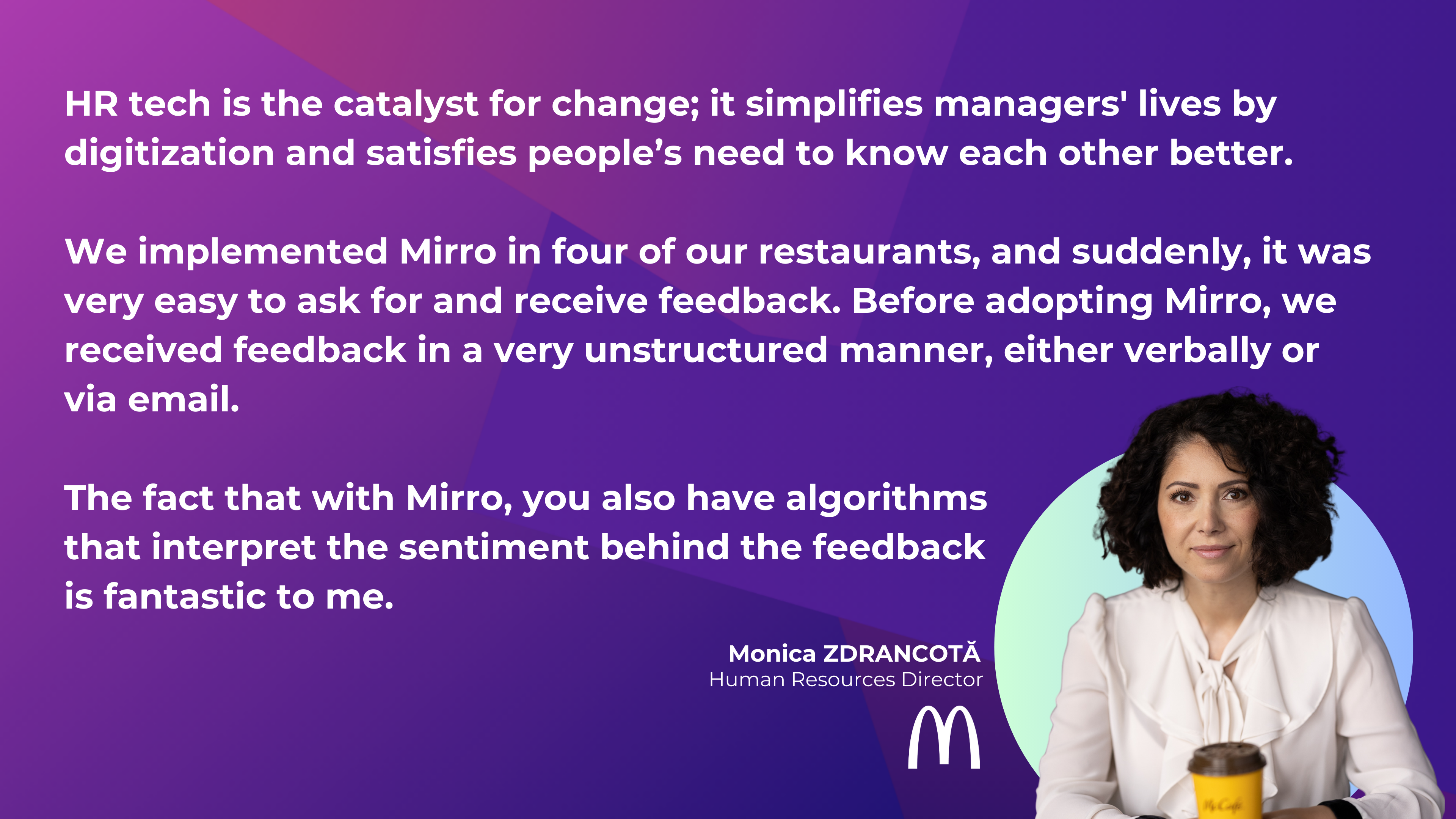
Build a sense of community in the workplace with Mirro
In the quest to cultivate robust workplace communities, more and more leaders are turning to innovative DEI software solutions like Mirro. Good leaders understand that building a real workplace community requires a space where people can connect, interact, and celebrate milestones together.
Mirro does just that by setting the stage to create authentic connections and nurturing a sense of belonging among employees. If you want to foster an inclusive environment by accommodating diverse needs related to culture, recognition, belongingness, remote work, and communication, schedule a free demo with our specialists.
We're committed to helping leaders create better workplaces for their teams. Be sure to look out for our upcoming events, as they will provide attendees with vital assistance and enable them to succeed in today's modern workplace. In the meantime, follow us on LinkedIn to be the first to learn about our next event. We hope to see you soon!
